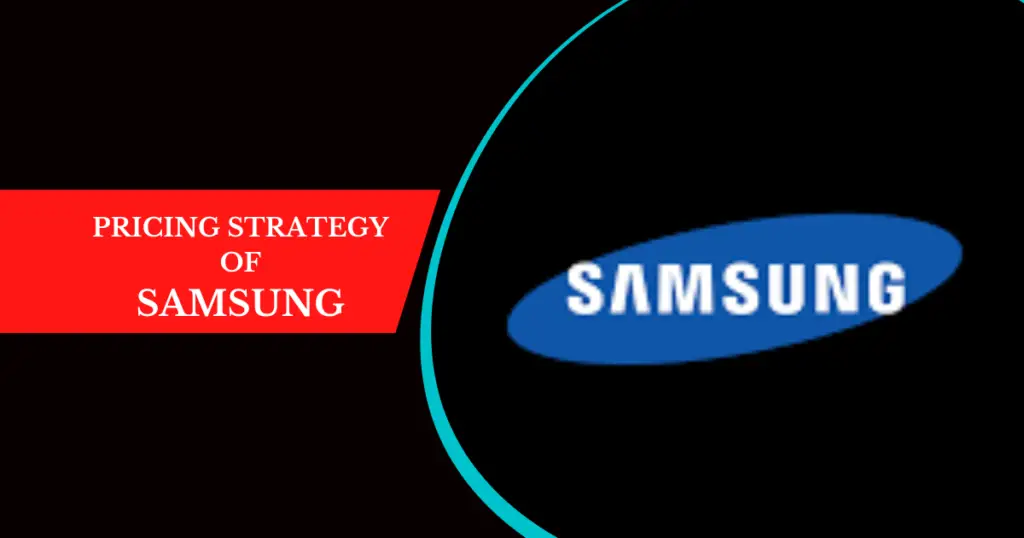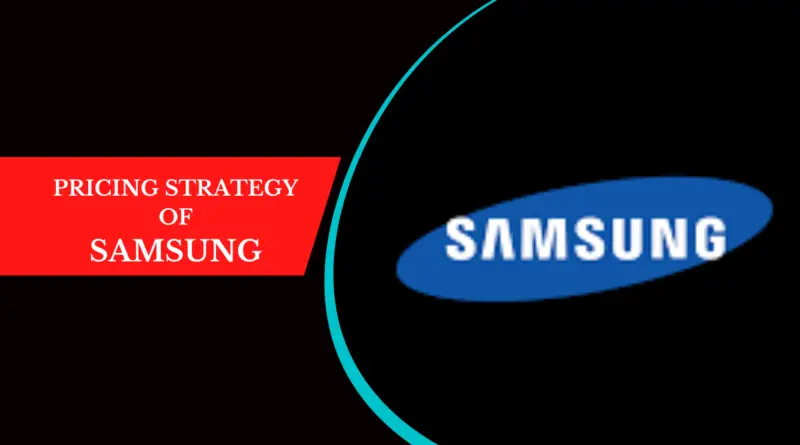The Pricing Strategy of Samsung: A Comprehensive Analysis
Samsung, a global leader in electronics, has managed to maintain its competitive edge through a sophisticated and dynamic pricing strategy. This strategy is multifaceted, leveraging elements of market skimming, competitive pricing, and psychological pricing to capture different market segments and maximize profitability. In this blog, we will explore the various components of Samsung’s pricing strategy, how they are implemented, and their impact on the market.
Pricing Strategy of Samsung

Market Skimming: Capitalizing on Innovation
One of the most notable strategies employed by Samsung is market skimming. This approach involves setting a high price initially for a new and innovative product and then gradually lowering the price over time. This strategy is particularly evident in Samsung’s flagship product lines, such as the Galaxy S and Galaxy Note series.
Initial High Pricing: When Samsung releases a new flagship smartphone, it is often priced at a premium. This high initial price targets early adopters who are willing to pay more for the latest technology and features. These customers value being among the first to own the new product and are less sensitive to price.
Gradual Price Reduction: After the initial launch period, Samsung gradually reduces the price of these devices. This allows the company to capture a broader customer base, including more price-sensitive consumers. The reduction in price over time also helps to clear out inventory before the next model is launched.
Product Life Cycle Management: By employing market skimming, Samsung maximizes profits during the early stages of the product life cycle when demand is inelastic. As the product matures and faces increased competition, the price drops to remain competitive.
Competitive Pricing: Staying Ahead of the Market
Samsung operates in a highly competitive market, especially in the smartphone and consumer electronics sectors. To maintain its market position, Samsung employs competitive pricing strategies, carefully aligning its prices with those of its competitors.
Price Matching and Undercutting: Samsung often monitors the pricing strategies of its key competitors, such as Apple and Huawei. In some cases, Samsung matches prices to remain competitive, while in others, it strategically undercuts prices to attract cost-conscious consumers.
Bundle Pricing: Another aspect of Samsung’s competitive pricing is bundle pricing. By offering products in bundles, such as a smartphone with a smartwatch or earphones, Samsung adds value for customers while maintaining a competitive edge. These bundles are often priced lower than the total cost of buying each product separately, making them attractive to consumers.
Regional Pricing Variations: Samsung also adjusts its pricing based on regional market conditions. In markets where competition is fierce, Samsung may offer lower prices or special promotions. Conversely, in markets with less competition, prices may be higher to maximize profits.
Psychological Pricing: Leveraging Consumer Perception
Psychological pricing is another key element of Samsung’s pricing strategy. This approach leverages consumer psychology to make prices more attractive and encourage purchasing behavior.
Charm Pricing: One common technique used by Samsung is charm pricing, where prices end in .99 or .95. For example, a product priced at $999.99 is perceived to be significantly cheaper than one priced at $1,000, even though the difference is just one cent. This small psychological trick can have a significant impact on consumer purchasing decisions.
Price Anchoring: Samsung also uses price anchoring to influence consumer perception. When launching a new product, Samsung may introduce a higher-priced model alongside a more affordable one. The higher-priced model serves as an anchor, making the more affordable model seem like a better deal, even if it is still relatively expensive.
Premium Pricing for Prestige: For some of its high-end products, Samsung employs premium pricing to create an image of exclusivity and prestige. Products like the Galaxy Fold and certain QLED TVs are priced at a premium to appeal to consumers who associate high price with high quality and status.
Value-Based Pricing: Aligning Price with Perceived Value
Samsung also incorporates value-based pricing into its strategy, where the price is based on the perceived value to the customer rather than the cost of the product. This strategy is particularly relevant for Samsung’s innovative and high-tech products.
Customer-Centric Approach: Samsung invests heavily in market research to understand what features and benefits customers value the most. For example, in the smartphone market, features such as camera quality, battery life, and screen resolution are highly valued. Samsung prices its products based on the value these features provide to the customer.
Product Differentiation: By differentiating its products through unique features and superior technology, Samsung can justify higher prices. For instance, the integration of advanced technologies such as 5G, foldable screens, and AI capabilities allows Samsung to command higher prices for these innovations.
Promotional Pricing: Driving Short-Term Sales
Promotional pricing is another tactic used by Samsung to boost short-term sales and attract new customers. This strategy includes various temporary price reductions and special offers.
Seasonal Discounts: Samsung frequently offers discounts during major shopping events such as Black Friday, Cyber Monday, and back-to-school seasons. These promotions drive significant sales volumes and help Samsung compete during critical retail periods.
Trade-In Programs: Samsung’s trade-in programs also play a crucial role in its promotional pricing strategy. Customers are offered discounts on new products when they trade in their old devices. This not only incentivizes customers to upgrade but also helps Samsung maintain customer loyalty.
Limited-Time Offers: Flash sales and limited-time offers create a sense of urgency among consumers, encouraging them to make immediate purchases to take advantage of the temporary discounts.
The Role of Branding in Pricing Strategy
Samsung’s strong brand equity significantly influences its pricing strategy. The brand is associated with quality, innovation, and reliability, allowing Samsung to command higher prices compared to lesser-known competitors.
Brand Loyalty: Loyal customers are often willing to pay a premium for Samsung products due to their trust in the brand. This loyalty enables Samsung to maintain higher prices and margins, especially for its flagship products.
Brand Positioning: Samsung positions itself as a leader in innovation and technology. This positioning supports higher pricing, as consumers are willing to pay more for cutting-edge features and advanced technology.
Conclusion
Samsung’s pricing strategy is a sophisticated blend of market skimming, competitive pricing, psychological pricing, value-based pricing, and promotional pricing. Each component is carefully crafted to target different segments of the market, maximize profitability, and maintain Samsung’s competitive edge. By continually adapting its pricing strategies to market conditions and consumer preferences, Samsung remains a dominant player in the global electronics industry.



